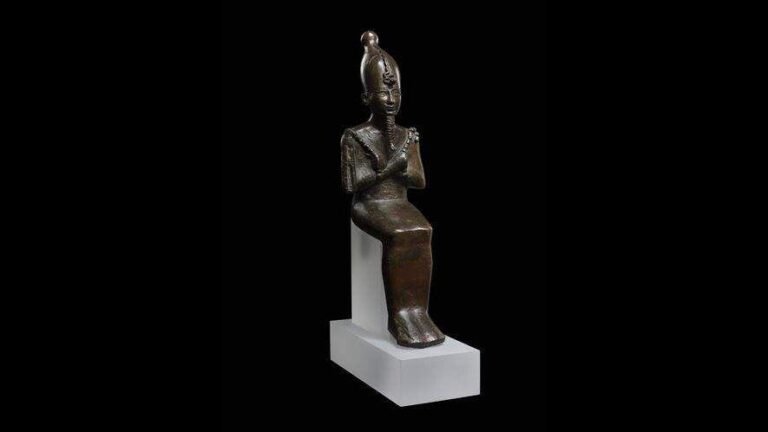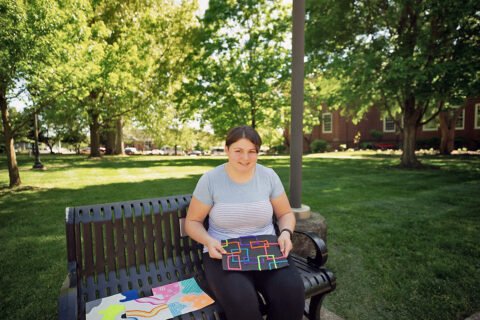ST. PETERSBURG
a confession: Antiquities have never been high on my list of loved art. For most of my life, I saw them as bits and pieces of eras that were historically interesting, but not represented by especially interesting mementos of them. Even intact things — the huge painted urns of ancient Greece, for example — were lovely, but they all looked the same to me. I respected them because they had survived so much time and tumult, but that was about all I felt and never sought out antiquities during museum visits.
Being an art critic has mandated that I see all art, not just my preferred art, and judge it with an open mind. That mandate has been a gift. It opened my eyes to the value of so much that I otherwise would have ignored, which has been especially true of antiquities. Now I love.
Yes, love.
I find in them essential and universal human connections. The long-gone lives they represent are usually only dimly known, if at all, and even the cultures from which they come hold mysteries despite exhaustive research and study through the ages. But in these objects, their world lives still. We see what mattered to these people and measure their values against our own. Often, the distance between us is not great.
All of which is a long prelude to my hope that you will see “Ancient Egypt — Art and Magic” at the Museum of Fine Arts, St. Petersburg. You have time; it continues through April 29. And take your time while there. This is the kind of exhibition that unfolds slowly and subtly, and reading the wall labels really does enrich the experience.
A lovely group of about 100 pieces comes from the much larger collection of Jean Claude Gandur, a European billionaire, and is curated by Egyptologist Robert Steven Bianchi. I had only seen the group in the catalogue when I wrote a preview of the show several weeks ago, before it was installed, so couldn’t weigh in on specifics except to admire the quality of the collection and the interesting principle Bianchi chose for organizing it.
The overall theme is the spirituality that infuses all the works. It isn’t a new idea; almost everything we have from ancient Egypt comes from tombs or temples. We’re fortunate that their elaborate burial rites have provided us with a trove of materials that tell us not just how they worshipped but how they lived.
This exhibition does an excellent job of illustrating the parallel nature of Egyptian culture, in which even the most mundane and utilitarian object could be infused with magical and religious significance. A mirror in daily life was a bibelot; in death, it could become a conveyance for one’s resurrection. To us, the mirror in this show is a thing of beauty. To the person who commissioned it for a tomb, beauty was a by-product of the mirror’s real point. The graceful assemblage of elements — a young woman, papyrus and disc — were symbols of new life after death and a tool for claiming it.
Nothing seems to have been done for beauty’s sake, what we today call aesthetics. There is no evidence of a hierarchy of skills for creating these objects, no attention given to the artisans from whom they issued. The finest materials were used because of what they represented. A small amulet with a goddess head and scorpion body is fashioned in gold because that was what Egyptians believed, literally, the gods were made of and the man-made likeness could become the deity, providing protection and direction.
The exhibition is divided among five galleries. Most of the works are sculptural objects; many are tiny because their power didn’t emanate from their size. Hung throughout are scrims printed with enlarged photographic images of temple and tomb sites. They’re a nice touch for context but, even better, all were made from 19th century photographs in the museum’s permanent collection, which are on display in an upstairs gallery.
The first gallery of “Ancient Egypt” is, of course, an introductory overview with objects from the 14 acknowledged periods in ancient Egyptian history, which spanned 4,000 years and several dozen dynasties. It’s the only section of the show that’s consciously chronological and shows us that stylistically there were few changes during those millennia. A map makes starkly clear how the life of this civilization depended on the Nile River. In a vast land made up mostly of desert, they settled on narrow slivers along its banks. After this overview, the arrangement becomes thematic instead of sequential.
The two primary materials used for sculptures and ritual objects were stone and bronze, and two galleries concentrate on those materials.
Stone represented permanence. Hieroglyphics and images carved into it could become animate and, in ceremonies similar to what we would call a consecration, speaking the words made them real. The incantations we see on panels could take on a physical power capable of providing actual food which the deceased would need in the afterlife, for example. The image of a husband and wife holding hands wasn’t a tender memorial; it was the couple, together for eternity.
The Egyptians were clear about what awaited them in the afterlife, and those lucky few in the elite class prepared methodically and meticulously for it to ensure they continued to enjoy their privileged status.
Copper and tin, from which bronze is made, were mined in the desert or Red Land, a place of chaos where evil abided. As in stone quarrying, extracting the metals required permission from the pharaoh. It was a holy task that included religious observances so that order — manipulating the materials — could be established.
Small statues cast in bronze or carved from alabaster (and also sometimes made of glazed pottery, called faience) could be surrogates, helpers or gods. They were the extra hands needed in the first two cases or the wise and knowing guide in the third.
Another gallery emphasizes the magical properties everyday objects could acquire using certain materials and incorporating appropriate images. Embellishing a statue with gemstones connected it to the earth, for example.
The last gallery is a grand finale starring two sarcophagus lids, the largest objects in the show. They are made of wood, which was a material of regeneration. They’re from the same general time period, 1080 to 700 or 600 BCE, about two-thirds of the way through pharaonic rule before Egypt fell to Rome.
Both are intimidating. One features elaborate decoration, the other is austere in its simple form and formidable head. They fleetingly made me think of the effigies used in the Middle Ages for kings’ coffins. But these are not meant to be reminders of the dead for the living, as effigies are. They are more like enormous calling cards announcing one’s presence and the significance of the new arrival.
This show builds upon itself, reinforcing its points and accumulating its proofs. At its end, I felt admiration (and a bit of envy) for these people who seem to us, living in a time of ambivalence and shaded areas, united in unequivocal certainty. We can assume, since they were human like us, that many had their dark nights of the soul, their fears and doubts. They knew their long journey to new life would be fraught with peril and reckoning. But they understood this journey. We see in this collection their complex negotiations with their gods and also the straightforwardness that took them from an end to a beginning.
Lennie Bennett can be reached at lbennett@tampabay.com or (727) 893-8293.





